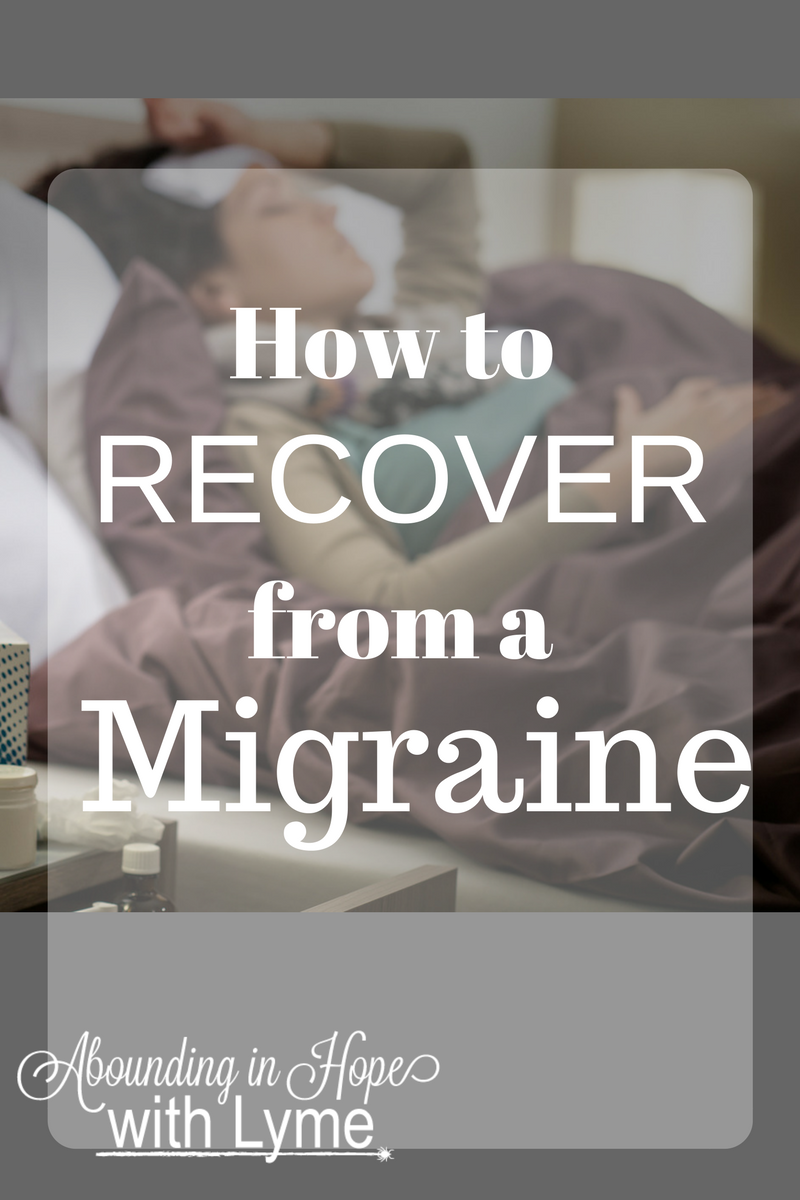Migraines can cause severe pain with throbbing on one side of the face. Sometimes they’re accompanied by nausea, vomiting, and sensitivity to light and sound. If you get migraines it’s just as important to learn how to recover from them as it is to prevent or treat them.
Migraines can be caused by stress, food allergies or sensitivities, environmental allergens, and the weather. When the barometric pressure changes dramatically I almost always get hit with a severe migraine. It lands me in a dark room and in bed for at least 2 days. My misery isn’t over after my migraine subsides. I’m usually left with a headache, fatigue, sensitivity to noise, and a queasy tummy.

It’s always best to learn what your migraine triggers are and then avoid them. I haven’t quite figured out how to avoid my migraine trigger because they’re brought on by the weather. So while I can’t really share how to avoid a weather-induced migraine I can tell you how to recover from one.
How to Recover From a Migraine
Rest
When a migraine strikes the most important thing you can do is get plenty of rest. Lying down in a dark room, free from noise, commotion, light, and electronics can help ease your throbbing head. Once your migraine subsides you still need to rest until you’ve fully recovered. Jumping back into a full schedule can further deplete your immune system and cause your recovery to take longer.
Use Heat & Ice
Using ice can help to numb the pain and alternating with heat can help relieve your pain. From experience, this is the thing that made the biggest difference.
Stay Hydrated
It’s very important to stay as hydrated as you can. Drink plenty of water, add a pinch of sea salt for minerals, and a lemon slice to help you stay hydrated. Of course, when I was lying in bed miserable with a throbbing head I didn’t want to get up for anything. Thankfully, my family took turns bringing me fresh water. If you don’t have help, fill up a large water bottle or jar and take it with you on your way to bed. This way you won’t need to get up for refills.
Magnesium
Believe it or not, magnesium can help with relaxation and pain management. So many of us are deficient in magnesium which in and of itself can be cause for headaches and migraines. If you’re prone to frequent migraines try taking a daily supplement of magnesium. A good quality supplement is worth the money because they tend to be more fully absorbed. Other ways to get your magnesium intake are to take an Epsom salt bath at the first sign of a migraine and to use a magnesium oil. Magnesium oil sprays or lotions are a great option if you don’t tolerate magnesium supplements very well.
Curcumin
Curcumin is a fantastic anti-inflammatory. Skip toxic medications and give curcumin a try. I chose to avoid over-the-counter anti-inflammatory medications when I heard a cardiologist speak about how they increase our risk for heart attack and stroke regardless of family history or predisposition. While I’ve never had curcumin take away a migraine, I find it helpful to take the edge off during and after an episode.
Get a Chiropractic Adjustment
I’m a huge fan of chiropractic care. Getting adjusted can help alleviate pressure and tension in the joints. Having regular adjustments will help to keep your spine aligned further benefiting your health.
Self-Care
Other self-care practices are very important during migraine recovery. When choosing foods to eat during and right after a migraine, choose bone broths, fresh fruits, veggies, and yogurt. Avoid caffeine, chocolate, sugar, gluten, and foods that are hard to digest as much as possible. Take it easy for a few days, limit activities other than stretching and yoga and give your body time to regain energy.
What practices have you found to be helpful for migraine treatment and recovery?
Further Reading:
10 Best Ways to Use Magnesium for Migraines
Migraine Buddy – a helpful app for narrowing down triggers and keeping track of migraines.
Heal Your Headache, The 1-2-3 Program, Dr. David Buchholz
Natural CGRP Receptor Antagonists




Leave a Reply